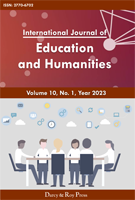The Veil of Language: An Analysis of the Social Functions and Cultural Implications of Euphemisms in Downton Abbey
DOI:
https://doi.org/10.54097/1pywyr48Keywords:
Euphemism, Downton Abbey, Social Class, Power, Culture, Language StrategyAbstract
Euphemism, as a universal linguistic phenomenon, extends far beyond simple lexical substitution; it is a profound reflection of specific socio-cultural contexts, power structures, and psychological needs. The British ITV period drama Downton Abbey, with its meticulous portrayal of early 20th-century British aristocracy and their servants, provides a rich case study for the analysis of English euphemisms. This paper analyzes the series' dialogue to examine how euphemisms function within the show's sociohistorical context. Specifically, it dissects their role as key instruments for maintaining class hierarchy, regulating social conduct, navigating sensitive topics, and mirroring societal change. Through this analysis, the paper seeks to reveal the intricate interplay between language and social structure.
Downloads
References
[1] Allan, K. & Burridge, K. Forbidden Words: Taboo and the Censoring of Language. Cambridge University Press, 2006.
[2] Brown, P. & Levinson, S. C. Politeness: Some Universals in Language Usage. Cambridge University Press, 1987.
[3] Enright, D. J. The Oxford Book of Death. Oxford University Press, 1983.
[4] Li Guonan (1999). Rhetoric and vocabulary. Shanghai Foreign Language Education Press
[5] Shao Zhihong (2005). Comparison and Translation of English and Chinese Euphemism. Foreign Language Teaching and Research, (1), 52-56
[6] Fellowes, J. (Writer). (2010-2015). Downton Abbey. [Television series]. Carnival Films.
Downloads
Published
Issue
Section
License
Copyright (c) 2025 International Journal of Education and Humanities

This work is licensed under a Creative Commons Attribution 4.0 International License.

















